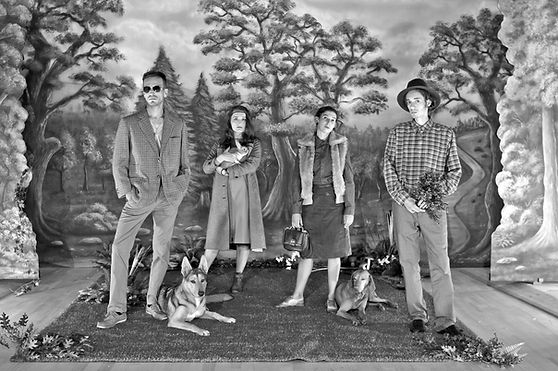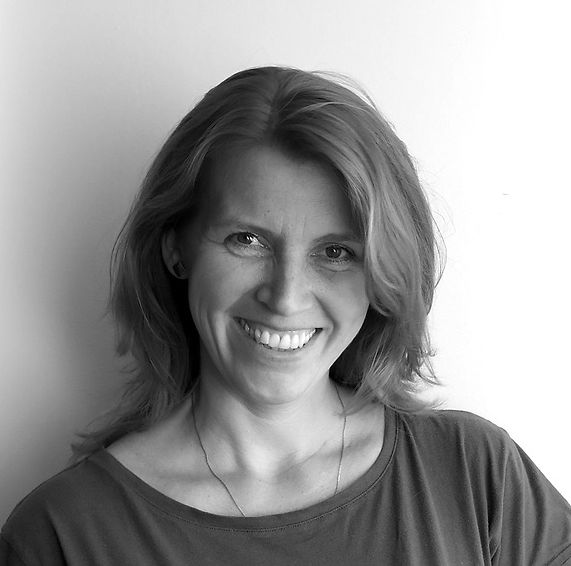SECTION 11
Closed?
Galleries & Performing Arts during
the Lockdown





Dominika Halvová
Moravská galerie v Brně, Czech Republic
Towards Performance Art: Embracing Beauty in the Mundane
The presentation is reflecting upon stay-at-home activities created by the Department of Public Programming of the Moravian Gallery in Brno that are inspired by the Gallery´s art collections, introducing the various art works with emphasis on the creative process instead of the result as an artistic object. The activities are aimed to reinforce collaboration and connection within families and communities and to inspire creative thinking in the context of the everyday objects or situations.
In the past twenty years the role of the gallery educator as the key mediator between the gallery and its visitors has gradually been established in the Czech environment. Gallery education has shifted from being perceived as an above-standard service to one of the main focus of galleries and museums. The educators in The Moravian Gallery in Brno are being consulted when there is an exhibition project being prepared in the institution and are able to operate with an autonomous budget when creating education programmes for public.
A new challenge arrived with the coronavirus pandemic. In March 2020 The Moravian Gallery in Brno, together with other cultural institutions, is shut down by the coronavirus measures adopted by Czech Ministry of Culture. This situation lasted until the mid May 2020. New exhibition projects were paused and postponed and visiting current exhibitions wasn’t possible anymore. The only way to engage with the gallery and the artworks was to participate in and follow the online content that has mostly been prepared by the Art Education Department.
Read more in the attached paper...





Aleš Pospíšil
Geisslers Hofcomoedianten, Department of Art Education, Pedagogical Faculty, University
of South Bohemia in České Budějovice, Czech Republic
Watch the performance exclusively for conference participants here.
Baroque Online: Streaming of Scenic Art for Educational Purposes During the Corona Crisis
This paper is devoted to the activities of the Czech professional independent theatre ensemble Geisslers Hofcomoedianten during the coronavirus crisis. It summarises the possibilities and accomplished goals of all pillars of the activity (artistic, scientific, educational) of the above mentioned ensemble, whose dramaturgy has been for almost two decades exclusively connected with sources of inspiration from the Baroque period and its interpretation in the form of purely contemporary approaches in the field of performing arts. The paper also includes the first release of a performance recording titled In the Blueberry Bushes (2017), which was inspired by the play La Mirtilla (1588), the first surviving pastoral written by a female author – famous actress and writer Isabella Andreini (1562–1604).
In the Czech Republic, contributory organisations, or so called brick and mortar institutions or dependent institutions are those theatres, galleries or other cultural facilities, whose founders are regions, individual cities or the city districts. They are thus, by their nature, part of the state apparatus of culture and their indisputable advantage is that their activities have stable financial support they can rely on in a long term (Bohadlová, 2020).
It is their connection to these permanent state contributions that, in general, obliges them to fulfil clearly formulated activities and set goals. Such obligations of the above mentioned institutions include, of course, the area of creative and artistic outputs and their presentation to the public, the fulfilment of the scientific segment (often embodied in publishing or conference activities, or innovations of the already mentioned segment of artistic creation) and, last but not least, the field of education. It is the last mentioned segment of the area of interest and activities of Czech cultural institutions that has experienced a significant qualitative shift in the last decades of their development. Previously rather additional segment is, quite rightly, slowly but surely becoming an equal partner to all other content that the contributory organisations in the field of culture fulfil by law.
Read more in the attached paper...





Silvie Novotná
Regional Museum in Olomouc, History department, Department of Art Education, Faculty
of Education, Palacký University Olomouc, Czech Republic
Olomouc: The story of One Exhibiton.
In spring 2020, the Regional Museum in Olomouc was scheduled to open an exhibition focusing on the history of Czech encyklopedies. Part of the exhibition was supposed to be the educational program primarily intended for secondary schools. The coronavirus pandemic ruined the plans. The educational potential of the exhibition could not be fullfilled in this way. It was decided that the main priority of the ‘covid-time’ would be to prepare an accompanying exhibition catalog. So it happened that both curators spent time in quarantine not only with their families, but mainly with F. Palacký, A. Rieger and other personalities of Czech encyclopedias. Nowadays, general scientific dictionaries are no longer published. This contribution presents the most important events in the field of creating and publishing general scientific dictionaries from the first attempt by F. Palacký to the ups and downs of the totalitarian and post-revolutionary period. It also demonstrates the exhibition, the opening of which was the first event taking place in the Regional Museum in Olomouc after it reopened to the public in June 2020.
In spring 2020, the Regional Museum in Olomouc was scheduled to open an exhibition focusing on the history of Czech encyklopedies. Part of the exhibition was supposed to be the educational program primarily intended for secondary schools. The coronavirus pandemic ruined the plans. The educational potential of the exhibition could not be fullfilled in this way. It was decided that the main priority of the ‘covid-time’ would be to prepare an accompanying exhibition catalog. So it happened that both curators spent time in quarantine not only with their families, but mainly with F. Palacký, A. Rieger and other personalities of Czech encyclopedias. Nowadays, general scientific dictionaries are no longer published. This contribution presents the most important events in the field of creating and publishing general scientific dictionaries from the first attempt by F. Palacký to the ups and downs of the totalitarian and post-revolutionary period. It also demonstrates the exhibition, the opening of which was the first event taking place in the Regional Museum in Olomouc after it reopened to the public in June 2020.
Read more in the attached paper...

Distribution of fine arts and accompanying programs of art exhibitions during the state of emergency and quarantine and the impact of the situation on the audience of fine arts
During the domestic quarantine, announced as a result of the Coronavirus pandemic in the spring of 2020 in many countries around the world, a paradoxical situation arose for the fine arts: art institutions, museums and galleries, could not physically make exhibitions available to the public, but art fans had much easier access to educational materials, accompanying program and also to the exhibitions themselves than ever before. Using a questionnaire we examine the extent to which the audience used these opportunities. We find out if the simplified access to exhibitions and supplementary materials led them to watch the program of institutions that did not follow before the outbreak of the pandemic and how they perceive the reception of works of art published by the mass media.
Tomáš Timko
Inštitút estetiky a umeleckej kultúry, Filozofická fakulta Prešovskej univerzity v Prešove, Slovakia
Málokto zrejme očakával a skutočne veril tomu, že sa v roku 2020 ľudstva bude týkať scenár, typický skôr pre apokalyptické filmy alebo literatúru na pokraji žánru sci-fi. Akoby sa zrazu zhmotnili temné predstavy ľudí o katastrofickej budúcnosti. Dôsledky pandémie koronavírusu SARS-CoV-2 už niekoľko mesiacov pociťujeme v každej oblasti bežného života, no zatiaľ najzásadnejším obdobím, ktoré prinieslo veľa zmien a obmedzení, bol mimoriadny stav, ktorý vo väčšine postihnutých štátov trval zhruba od marca do mája roku 2020. Mohli by sme povedať, že štatisticky väčšia časť európskej populácie trávila tento čas skutočne doma a využívala ho na externú prácu pre zamestnávateľa, prípadne u časti ľudí išlo o prácou nezaťažený voľný čas. Veľká časť populácie v postihnutých krajinách na vlastnej koží zažila vybočenie z "normálneho" stavu a z toho hľadiska hlavným motívom roka 2020 by určite mohla byť práve zmena – nútený experiment vyjsť zo zabehnutých koľají a snažiť sa hľadať nové cesty.
Umenia a kultúry sa obmedzenia dotkli v plnej miere. Väčšina podujatí, najmä medzinárodné výstavy, veľtrhy a sympóziá, bolo zrušených alebo presunutých na neskorší termín. Vzniklo akoby vákuum, ktoré si doslova žiadalo, aby bolo vyplnené. Umelecká scéna sa zdanlivo bránila internetu ako najsilnejšiemu masmédiu, respektíve ho pokladala iba za nástroj na propagáciu. Zakrátko sa ale tieto svety museli spojiť, aby práve spomínané prázdne miesto mohlo byť zaplnené a kontinuita prezentácie umeleckej scény ostala zachovaná.
Read more in the attached paper...
(in Slovak only)